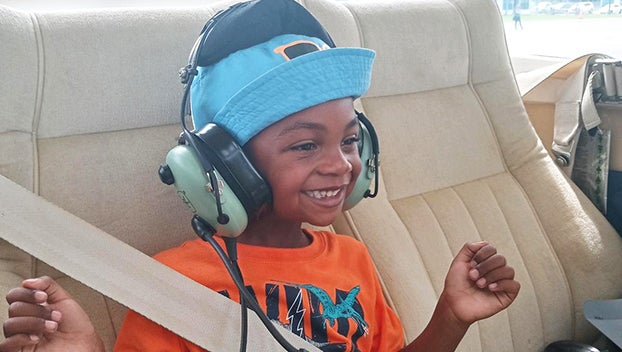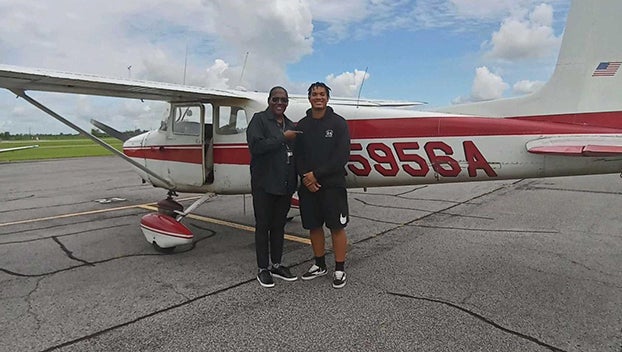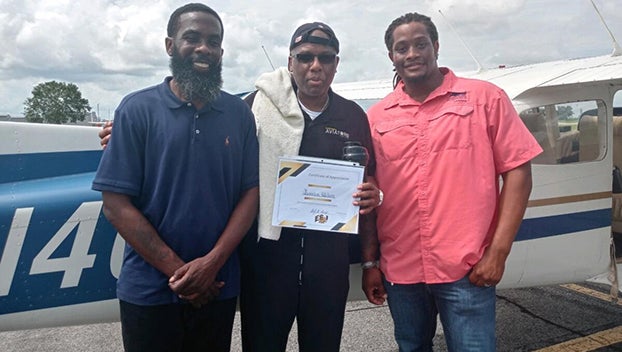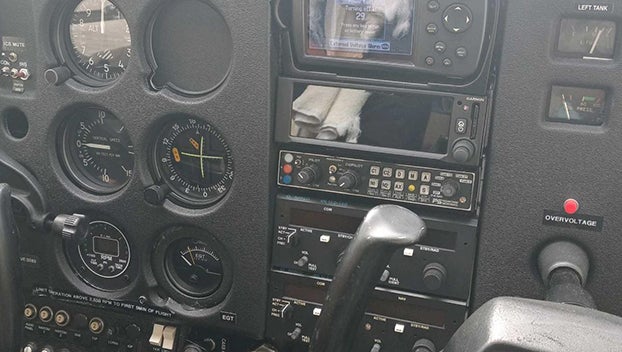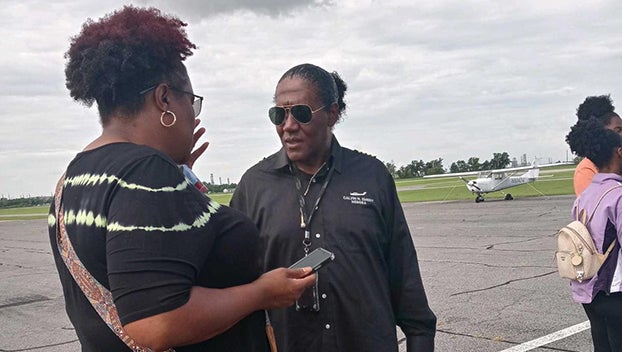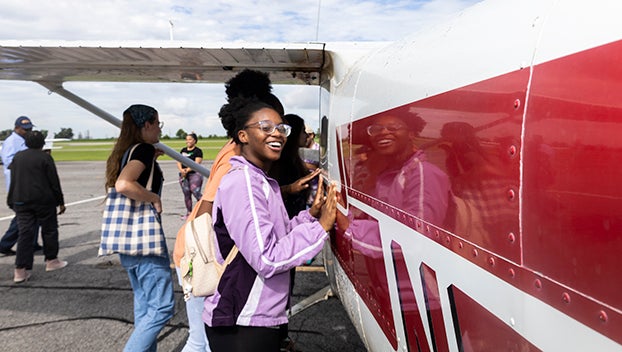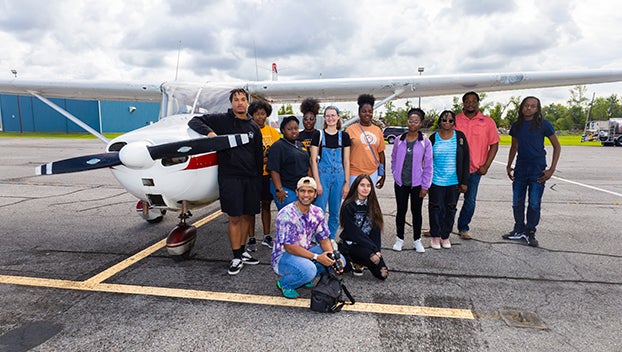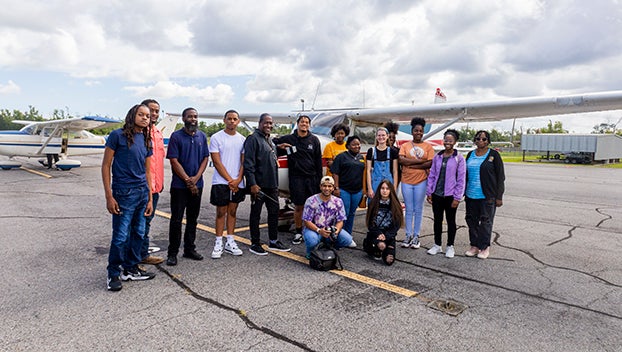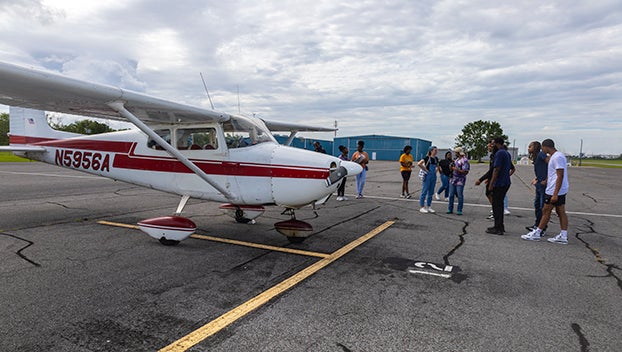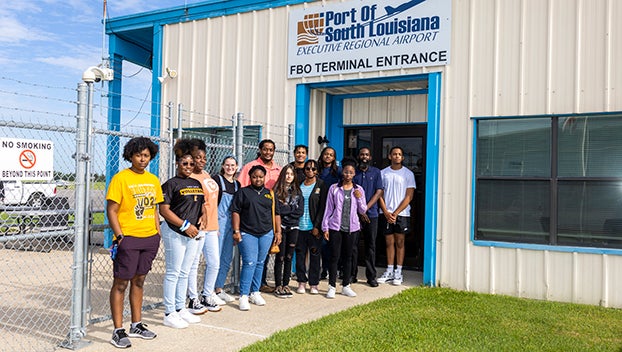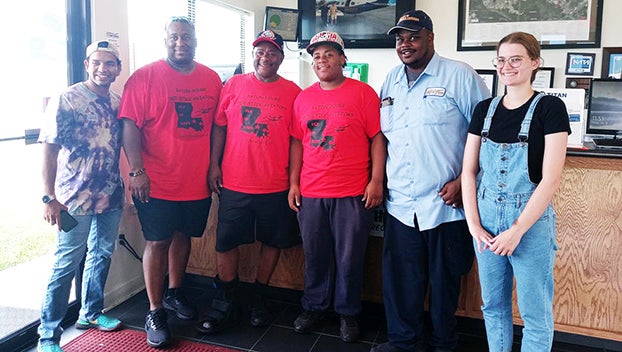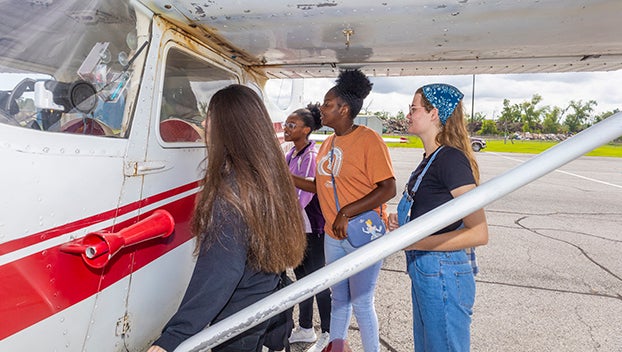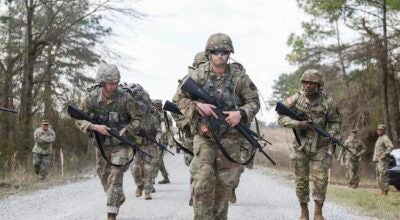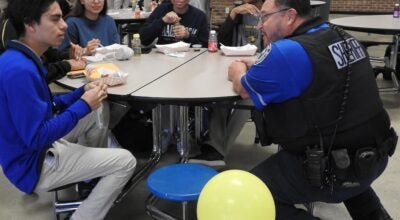Jump Start Summers Program takes flight at Reserve Airport
Published 12:04 am Wednesday, July 20, 2022
|
Getting your Trinity Audio player ready...
|
LAPLACE — Students in the Jump Start Summers Program took their knowledge of GIS from the classroom to the sky during an interactive field trip last Friday at the Port of South Louisiana’s Executive Regional Airport in Reserve.
Pilots guided students through a pre-flight briefing and offered them the unforgettable experience of getting behind the wheel.
Calvin N. Emery of Baton Rouge, a professional musician and a pastor of more than 30 years, found a passion for aviation after his children graduated from college. Today, Emery uses his plane to visit his children across the country.
Emery also gives back to the community by introducing young people to aviation. Last Friday, he introduced local students to a Cessna 172, the most mass-produced airplane in the history of aviation.
“I think it’s a vital field. A lot of times, we don’t do something because we are afraid or we don’t have knowledge of it. When we have knowledge, it makes it less fearful,” Emery said. “I especially like to reach low-income individuals because often they don’t have an opportunity to be introduced to flying. Aviation is an open avenue. A lot of pilots are retiring. If you give a kid or a young person an introduction, the exposure creates a spark, and it opens up a realm of possibility.”
Pilots Cedric Grimes, Quentin Wilson and Paul “Hilton” Green also dedicated time to educating students last week, along with Airport Manager Charles Palmer and GIS instructors Vibryun Epuri and Sara Pellerin.
Hilton Green and his son, Tristan, both alumni of East St. John, visited students in the classroom prior to the field trip. Hilton Green spoke to the youth about how the choices they make today will shape their futures.
Tristan Green spoke about how he fell in love with flight from the time he was only 3 years old. While other teenagers were involved in typical high school activities, Tristan was attending flight school and pursuing his dream of becoming a pilot before the age of 21.
Father and son spoke about starting a new tradition of flying over the Joe Keller Stadium during the alumni football game. With quality educational programs currently in place, they are confident that there will be future pilots coming out of East St. John to continue the tradition.
Instructor Beverly Reed said students asked questions about the many facets of flight. Through both the Jump Start Summers Program and a drone certification course offered at East St. John, students are gaining the foundation they need to transition to a career in aviation.
“They’ve been learning about the altitude that these planes actually fly, the parts of the airplane and what’s involved in a pre-flight check,” Reed said. “When they are being trained to be certified to operate drones, they are being trained like a real pilot. It’s almost the same test.”
Student John Cowart is interested in learning more about aviation to further his dream career in welding. Through the course, he has learned about types of clouds, altitude, density and air classifications.
“I want to be a welder, and if I know how to fly, I will be able to work more out of state and get to places faster,” Cowart said. “Mapping with drones can also help you build structures. Especially with going into industry, I can use drones to map and start building for myself. If you buy acres of land, it helps you see what you’re working with and how the land is leveled out.”
Devin Meyer, an instructor with East St. John’s welding program offered at the ABC campus in St. Rose, said industry is increasing use of drones to avoid sending men and woman into hazardous situations.
“Industry is starting to get away from sending a man to a tower. Sending drones is a lot easier and a lot cleaner,” Meyer said.
Jaylen Reese, a student in the Jump Start Summers program, said lessons about aviation tie into opportunities with GIS and industry.
With plans to become an operator at a plant, Reese spoke about how maps are needed to determine placement of petrochemical equipment.
“In our class, we learn how to build maps. When the pilots take us in the air, we can look down at the trees and get that aerial view. I think GIS is cool because I’ve always wondered how maps are made. When you are in the air, you can send that data to others so they can make a map,” Reese said.


